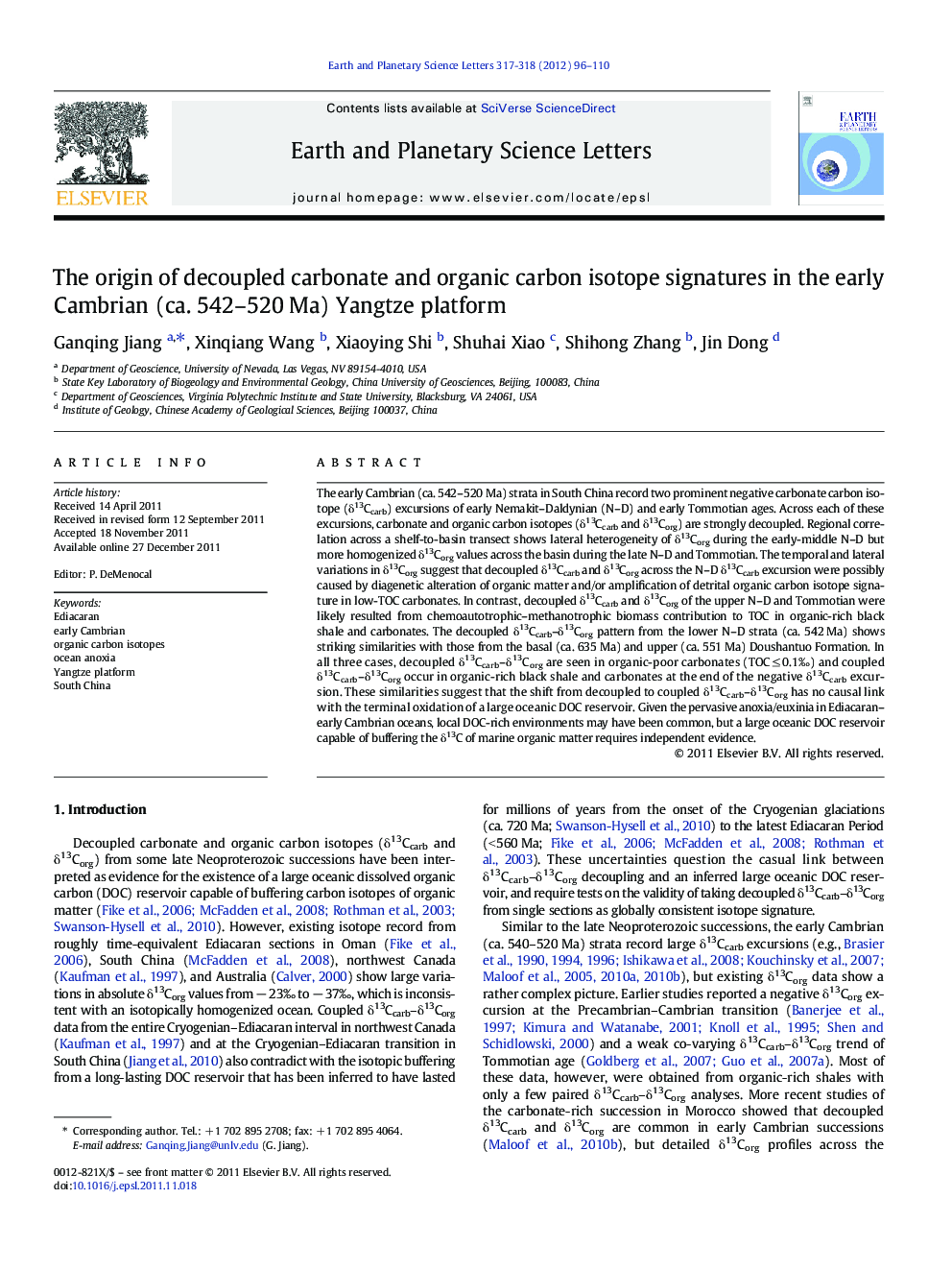| کد مقاله | کد نشریه | سال انتشار | مقاله انگلیسی | نسخه تمام متن |
|---|---|---|---|---|
| 4677627 | 1634812 | 2012 | 15 صفحه PDF | دانلود رایگان |

The early Cambrian (ca. 542–520 Ma) strata in South China record two prominent negative carbonate carbon isotope (δ13Ccarb) excursions of early Nemakit–Daldynian (N–D) and early Tommotian ages. Across each of these excursions, carbonate and organic carbon isotopes (δ13Ccarb and δ13Corg) are strongly decoupled. Regional correlation across a shelf-to-basin transect shows lateral heterogeneity of δ13Corg during the early-middle N–D but more homogenized δ13Corg values across the basin during the late N–D and Tommotian. The temporal and lateral variations in δ13Corg suggest that decoupled δ13Ccarb and δ13Corg across the N–D δ13Ccarb excursion were possibly caused by diagenetic alteration of organic matter and/or amplification of detrital organic carbon isotope signature in low-TOC carbonates. In contrast, decoupled δ13Ccarb and δ13Corg of the upper N–D and Tommotian were likely resulted from chemoautotrophic–methanotrophic biomass contribution to TOC in organic-rich black shale and carbonates. The decoupled δ13Ccarb–δ13Corg pattern from the lower N–D strata (ca. 542 Ma) shows striking similarities with those from the basal (ca. 635 Ma) and upper (ca. 551 Ma) Doushantuo Formation. In all three cases, decoupled δ13Ccarb–δ13Corg are seen in organic-poor carbonates (TOC ≤ 0.1‰) and coupled δ13Ccarb–δ13Corg occur in organic-rich black shale and carbonates at the end of the negative δ13Ccarb excursion. These similarities suggest that the shift from decoupled to coupled δ13Ccarb–δ13Corg has no causal link with the terminal oxidation of a large oceanic DOC reservoir. Given the pervasive anoxia/euxinia in Ediacaran–early Cambrian oceans, local DOC-rich environments may have been common, but a large oceanic DOC reservoir capable of buffering the δ13C of marine organic matter requires independent evidence.
► Decoupled δ13Ccarb–δ13Corg patterns from the early Cambrian succession.
► Large spatial variations indicate their local origin.
► Detrital organic carbon contribution in organic-poor carbonates.
► Chemoautotrophic–methanotrophic biomass contribution in organic-rich shale/carbonates.
► No causal link between a large DOC reservoir and decoupled δ13Ccarb–δ13Corg.
Journal: Earth and Planetary Science Letters - Volumes 317–318, 1 February 2012, Pages 96–110